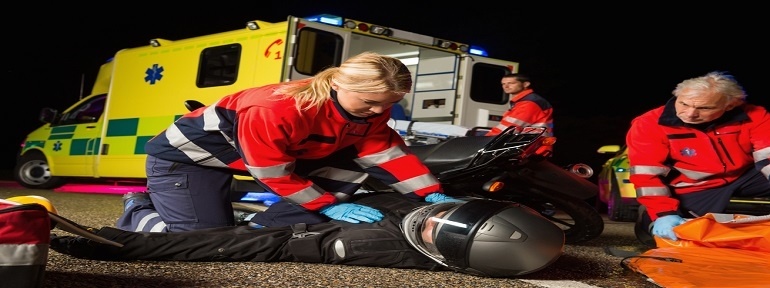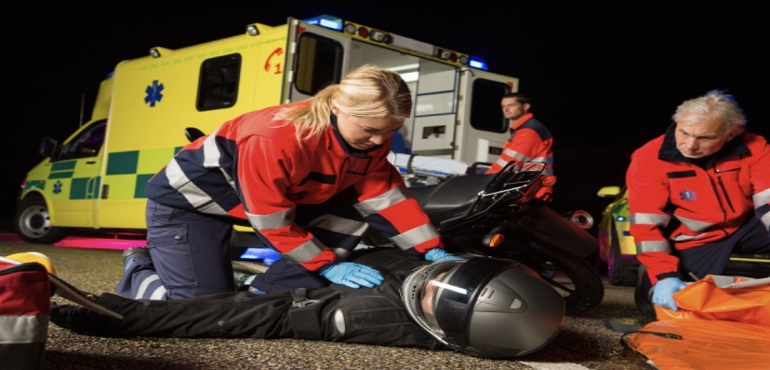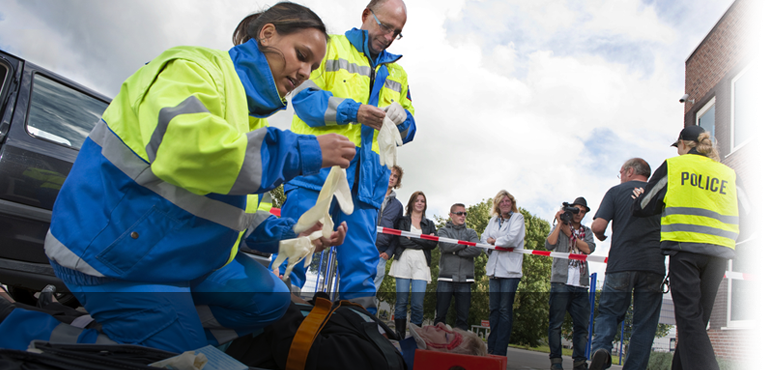| Toll Free : 1844 495 7333(injury hotline- new cases only) | |
| Text a Personal Injury Lawyer 24/7 and get instant help.TM (416 931 5015) | |
| Head Office : 905 495 7333 |
Off-roading 2018 – 2019: Challenges and Risks
December 18, 2018
Canadians across the country are passionate about sports and life in the great outdoors. Off roading is a popular sport in summer, but the onset of winter doesn’t mean putting your ATV into cold storage for those three or four months. Remember, these beasts are designed to power their way through any kind of terrain, no matter what the season. Canadian trails are delightful whatever the weather – and winter brings its own set of gorgeous landscapes like snowy forests, iced-over rivers and frozen lakes. There are lots of clubs who encourage winter ATV challenges and all that passionate off-roaders have to do is sign up and set out. However, as your trusted lawyers in Brampton and your trusted lawyers in Toronto, we recommend that it’s important to know and follow the rules before you take your vehicle out.
Ontarians find these vehicles exciting and they’re very popular among all age groups. However, a new trend is being seen where these off-road vehicles are being driven on city roads and public highways. This carries its own set of risks because the vehicle is essentially designed and built for off-road conditions.
Is it Legal to Drive Off-Road Vehicles on Highways in Ontario?
The Ontario Ministry of Transportation amended some of the rules regarding use of ATV and ORV (off-road vehicles) in 2015. Certain types of ATVs and ORVs were allowed to ply on the shoulder of public roads, subject to permission. The ministry also published a handbook entitled Smart Ride Safe Ride which describes these amendments in detail, including where to drive the vehicle, who is permitted to drive it, the road rules that must be followed and also how to drive these vehicles in a safe manner.
The new amendments also change the definition of ATV to include different types of SUVs and SxS vehicles. An ATV is described as a single-rider vehicle with four wheels in contact with the ground, with the seat and handlebars, and designed only for one rider. If the vehicle has one passenger seat designed for a pillion rider, with foot-rests separate from those of the rider. Other definitions describe vehicles like multi-purpose utility vehicles, recreational off-road vehicles, etc.
The municipal rules remain the same. This means that you can ride on Highways 500 – 899, certain designated 7000 series highways, or those with lesser traffic. The rules also specify which highways and roads ATVs are not permitted on. There is also a list of highways that you are not permitted to cross. Riders cannot enter private property without the consent of the property owner. It is also prohibited to enter a property when the gate is closed, unless the owner gives permission. Avoid disturbing natural habitat of marine life, flora and fauna.
Speed restrictions for ATVs and ORVs is 20 km/h on roads with speed limit of 50 km/h or less. When the speed limit is 50 or more, you need to stay at 50 km/h or below. Municipalities can set their own speed limits.
On-road driving must always be in the direction of the traffic, on the designated shoulder of the road, with head and tail lights on.
Are there any driver restrictions?
There are very strict rules regarding who can drive these vehicles. Today, many parents allow young children to operate them but this is a risk not only to their own safety but also to that of other road users.
On-road riders should be at least 16 years old, they must have a valid G2 or M2 license. Passengers cannot be under age 8. Both riders and passengers must wear approved motorcycle helmets, with chin straps. They should also use seat-belts if available. If the ATV is towing a trailer, there should be no passengers in the trailer. The vehicle should comply with environmental rules prevalent in the province and not cause any harm, injury or damage to property, flora or fauna. It should not cause any harm or disturbance due to pollution, noise, emissions, dust etc.
These rules also apply to the far northern regions of Ontario. In southern Ontario, many areas still don’t permit riding ATVs on public roads in spite of the new amendments.
However, as off-road riders know, it is important for them to have access to fueling stations, food and water and health care facilities on the roads. They usually undertake long trips, so they also need proper accommodation. One of the spin-offs of allowing the legal use of off-road vehicles is that the local tourism industry can get a huge boost in many areas.
When And Why You Need An Injury Lawyer?
If you or a dear one has been injured in an accident involving an off-roader vehicle, get medical attention, no matter how minor you consider your injuries to be. Common injuries include limb fractures, head, neck, spine and brain injury, facial and dental damage, internal bleeding, organ damage, fractured ribs, etc. Collect as much evidence as you can in the form of photos, touch base with witnesses and get their contact information. Next, contact us, the most rated injury lawyer in 2018 immediately. Get help of an injury lawyer to claim your insurance.
How To Find Information for Injury Claims?
Use the services of a lawyer near you. Inform your insurance company. Most expenses are covered under the Ontario Health Insurance Plan, (OHIP) but it may not cover expenses for medications, loss of income or certain types of long term costs. All ATVs have to carry insurance, and some of them may be covered under the driver’s auto insurance policies.
You need to get the help of an injury lawyer to claim your insurance and we can help you through the entire claims process. The settlement is based on the nature and extent of your injuries, the circumstances of the claim and the negligence/fault of the other driver.
Off-roading 2018 – 2019: Challenges and Risks
December 18, 2018
Canadians across the country are passionate about sports and life in the great outdoors. Off roading is a popular sport in summer, but the onset of winter doesn’t mean putting your ATV into cold storage for those three or four months. Remember, these beasts are designed to power their way through any kind of terrain, no matter what the season. Canadian trails are delightful whatever the weather – and winter brings its own set of gorgeous landscapes like snowy forests, iced-over rivers and frozen lakes. There are lots of clubs who encourage winter ATV challenges and all that passionate off-roaders have to do is sign up and set out. However, as your trusted lawyers in Brampton and your trusted lawyers in Toronto, we recommend that it’s important to know and follow the rules before you take your vehicle out.
Ontarians find these vehicles exciting and they’re very popular among all age groups. However, a new trend is being seen where these off-road vehicles are being driven on city roads and public highways. This carries its own set of risks because the vehicle is essentially designed and built for off-road conditions.
Is it Legal to Drive Off-Road Vehicles on Highways in Ontario?
The Ontario Ministry of Transportation amended some of the rules regarding use of ATV and ORV (off-road vehicles) in 2015. Certain types of ATVs and ORVs were allowed to ply on the shoulder of public roads, subject to permission. The ministry also published a handbook entitled Smart Ride Safe Ride which describes these amendments in detail, including where to drive the vehicle, who is permitted to drive it, the road rules that must be followed and also how to drive these vehicles in a safe manner.
The new amendments also change the definition of ATV to include different types of SUVs and SxS vehicles. An ATV is described as a single-rider vehicle with four wheels in contact with the ground, with the seat and handlebars, and designed only for one rider. If the vehicle has one passenger seat designed for a pillion rider, with foot-rests separate from those of the rider. Other definitions describe vehicles like multi-purpose utility vehicles, recreational off-road vehicles, etc.
The municipal rules remain the same. This means that you can ride on Highways 500 – 899, certain designated 7000 series highways, or those with lesser traffic. The rules also specify which highways and roads ATVs are not permitted on. There is also a list of highways that you are not permitted to cross. Riders cannot enter private property without the consent of the property owner. It is also prohibited to enter a property when the gate is closed, unless the owner gives permission. Avoid disturbing natural habitat of marine life, flora and fauna.
Speed restrictions for ATVs and ORVs is 20 km/h on roads with speed limit of 50 km/h or less. When the speed limit is 50 or more, you need to stay at 50 km/h or below. Municipalities can set their own speed limits.
On-road driving must always be in the direction of the traffic, on the designated shoulder of the road, with head and tail lights on.
Are there any driver restrictions?
There are very strict rules regarding who can drive these vehicles. Today, many parents allow young children to operate them but this is a risk not only to their own safety but also to that of other road users.
On-road riders should be at least 16 years old, they must have a valid G2 or M2 license. Passengers cannot be under age 8. Both riders and passengers must wear approved motorcycle helmets, with chin straps. They should also use seat-belts if available. If the ATV is towing a trailer, there should be no passengers in the trailer. The vehicle should comply with environmental rules prevalent in the province and not cause any harm, injury or damage to property, flora or fauna. It should not cause any harm or disturbance due to pollution, noise, emissions, dust etc.
These rules also apply to the far northern regions of Ontario. In southern Ontario, many areas still don’t permit riding ATVs on public roads in spite of the new amendments.
However, as off-road riders know, it is important for them to have access to fueling stations, food and water and health care facilities on the roads. They usually undertake long trips, so they also need proper accommodation. One of the spin-offs of allowing the legal use of off-road vehicles is that the local tourism industry can get a huge boost in many areas.
When And Why You Need An Injury Lawyer?
If you or a dear one has been injured in an accident involving an off-roader vehicle, get medical attention, no matter how minor you consider your injuries to be. Common injuries include limb fractures, head, neck, spine and brain injury, facial and dental damage, internal bleeding, organ damage, fractured ribs, etc. Collect as much evidence as you can in the form of photos, touch base with witnesses and get their contact information. Next, contact us, the most rated injury lawyer in 2018 immediately. Get help of an injury lawyer to claim your insurance.
How To Find Information for Injury Claims?
Use the services of a lawyer near you. Inform your insurance company. Most expenses are covered under the Ontario Health Insurance Plan, (OHIP) but it may not cover expenses for medications, loss of income or certain types of long term costs. All ATVs have to carry insurance, and some of them may be covered under the driver’s auto insurance policies.
You need to get the help of an injury lawyer to claim your insurance and we can help you through the entire claims process. The settlement is based on the nature and extent of your injuries, the circumstances of the claim and the negligence/fault of the other driver.








